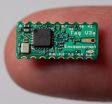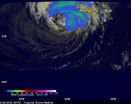(Press-News.org) Walking to a beat could be useful for patients needing rehabilitation, according to a University of Pittsburgh study. The findings, highlighted in the August issue of PLOS One, demonstrate that researchers should further investigate the potential of auditory, visual, and tactile cues in the rehabilitation of patients suffering from illnesses like Parkinson's Disease—a brain disorder leading to shaking (tremors) and difficulty walking.
Together with a team of collaborators from abroad, Ervin Sejdic, an assistant professor of engineering in Pitt's Swanson School of Engineering, studied the effects of various metronomic stimuli (a mechanically produced beat) on fifteen healthy adults, ages 18 to 30. Walkers participated in two sessions consisting of five 15-minute trials in which the participants walked with different cues.
In the first, participants walked at their preferred walking speed. Then, in subsequent trials, participants were asked to walk to a metronomic beat, produced by way of visuals, sound, or touch. Finally, participants were asked to walk with all three cues simultaneously, the pace of which was set to that of the first trial.
"We found that the auditory cue had the greatest influence on human gait, while the visual cues had no significant effect whatsoever," said Sejdic. "This finding could be particularly helpful for patients with Parkinson's Disease, for example, as auditory cues work very well in their rehabilitation."
Sejdic said that with illnesses like Parkinson's Disease, a big question is whether researchers can better understand the changes that come with this deterioration. Through their study, the Pitt team feels that visual cues could be considered as an alternative modality in rehabilitation and should be further explored in the laboratory.
"Oftentimes, a patient with Parkinson's Disease comes in for an exam, completes a gait assessment in the laboratory, and everything is great," said Sejdic. "But then, the person leaves and falls down. Why? Because a laboratory is a strictly controlled environment. It's flat, has few obstacles, and there aren't any cues (like sound) around us. When we're walking around our neighborhoods, however, there are sidewalks, as well as streetlights and people honking car horns: you have to process all of this information together. We are trying to create that real-life space in the laboratory."
In the future, Sejdic and his team would like to conduct similar walking trials with patients with Parkinson's Disease, to observe whether their gait is more or less stable.
"Can we see the same trends that we observed in healthy people?" he said. "And, if we observe the same trends, then that would have direct connotations to rehabilitation processes."
Additionally, his team plans to explore the impact of music on runners and walkers.
###
Funding for this project was provided, in part, by the University of Pittsburgh, the University of Toronto, and Holland Bloorview Kids Rehabilitation Hospital.
END
A new study of high-tech startups that participated in the Rice Business Plan Competition (RBPC) shows that these entrepreneurs have a much higher rate of success than typical new ventures and are therefore more likely to contribute to job growth.
The study by the Rice Alliance for Technology and Entrepreneurship spans the 11-year life of the RBPC, the world's richest and largest business plan competition, which comprises teams of graduate students from throughout the world. The comprehensive and longitudinal study offers insights into the experiential factors that can ...
It's a high-pressure environment within solid tumors. Abnormal blood and lymphatic vessels cause fluids to accumulate, and the uncontrolled proliferation of cancer cells within limited space leads to the buildup of what is called solid stress. Both types of pressure can interfere with the effectiveness of anticancer treatments, but while strategies have been developed that reduce fluid pressures, little has been known about the impact of solid stress or potential ways to alleviate it. Now a Massachusetts General Hospital (MGH) research team has identified factors that ...
If two birds meet deep in the forest, does anybody hear? Until now, nobody did, unless an intrepid biologist was hiding underneath a bush and watching their behavior, or the birds happened to meet near a research monitoring station. But an electronic tag designed at the University of Washington can for the first time see when birds meet in the wild.
A new study led by a biologist at Scotland's University of St. Andrews used the UW tags to see whether crows might learn to use tools from one another. The findings, published last week in Current Biology, supported the theory ...
PASADENA, Calif.—At any given moment, millions of cells are on the move in the human body, typically on their way to aid in immune response, make repairs, or provide some other benefit to the structures around them. When the migration process goes wrong, however, the results can include tumor formation and metastatic cancer. Little has been known about how cell migration actually works, but now, with the help of some tiny worms, researchers at the California Institute of Technology (Caltech) have gained new insight into this highly complex task.
The team's findings are ...
Los Angeles, CA (September 20, 2012) SAGE and The Society for Medical Decision Making are pleased to announce the release of seven new reports that will have a significant impact on modeling techniques in health care research and medical decision making. Written by the Modeling Good Research Practices Task Force, a special group of leading experts in decision analysis, economics, simulation, and health policy, these reports were published in a special issue of Medical Decision Making (MDM), a SAGE journal.
"The history of decision and economic modeling to support health ...
Investigators at Northwestern University Feinberg School of Medicine have identified two promising therapies to treat patients with acute megakaryocytic leukemia (AMKL), a rare form of leukemia where the number of cases is expected to increase with the aging population.
The disease is characterized by an overload of white blood cells that remain forever young because they can't mature into specialized cells. Published in a recent issue of the journal Cell, the study found that the drug with the generic name alisertib (MLN8237), induced division and growth of healthy ...
The pressures of global trade may heighten disease incidence by dictating changes in land use. A boom in disease-carrying ticks and chiggers has followed the abandonment of rice cultivation in Taiwanese paddies, say ecologist Chi-Chien Kuo and colleagues, demonstrating the potential for global commodities pricing to drive the spread of infections. Their work appears in the September issue of ESA's journal Ecological Applications.
After Taiwan joined the World Trade Organization in 2001, active cultivation of rice paddies fell from 80 percent to 55 percent in just three ...
Scientists and forecasters have been analyzing Tropical Storm Nadine using various NASA satellites as NASA's Global Hawk flew over the storm gathering information. Both the Global Hawk and NASA's TRMM satellite noticed that Nadine has continued to display tropical characteristics, indicating that it has not transitioned to an extra-tropical storm.
Forecasters noted that Nadine could have started transitioning into an extra-tropical storm, because there was little significant rainfall near Nadine's center of circulation yesterday, Sept. 19. However, satellite data and ...
Tried-and-true techniques could help optimize oilseed yield for biodiesel production, according to studies conducted by U.S. Department of Agriculture (USDA) scientists.
For more than 30 years, near infrared (NIR) reflectance spectroscopy has been used as a rapid and nondestructive method for measuring protein, moisture, and oil levels in whole grains. Now Agricultural Research Service (ARS) research leader Dan Long is studying how to use remote sensing tools to quickly assess seed oil quality and quantity before and after harvest.
ARS is USDA's chief intramural scientific ...
The sun's atmosphere dances. Giant columns of solar material – made of gas so hot that many of the electrons have been scorched off the atoms, turning it into a form of magnetized matter we call plasma – leap off the sun's surface, jumping and twisting. Sometimes these prominences of solar material, shoot off, escaping completely into space, other times they fall back down under their own weight.
The prominences are sometimes also the inner structure of a larger formation, appearing from the side almost as the filament inside a large light bulb. The bright structure around ...



